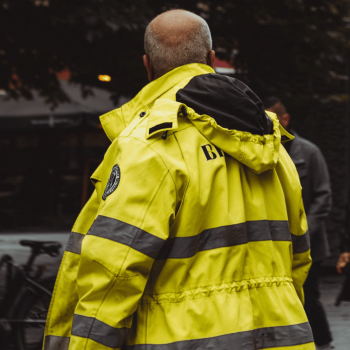
Stay Prepared: How to Build an Emergency Kit
Because emergencies can show at any time, it’s never a bad idea to have preparations in place before circumstances become dire. Though different situations call for different tools, it’s possible to have a kit suited for a number of issues. With this quick guide to the best supplies and way to build an emergency kit, anyone can stock up on the resources they may need the most.
Quantities
Planners should prepare to have enough supplies to last at least one to two weeks. Since it’s best to prepare well before an emergency happens, this can also be a good time to speak with friends or family members about what’s available and who may have particular needs, such as those with underlying medical conditions. If evacuation is a concern, also be sure to have a stock of supplies ready for immediate departure.

Food and Water
Any emergency security plan should include food and water; these should be measured both in terms of individual and familial needs. That is, there should be at least a gallon of water per person, per day, and a supply for the entire household. Have emergency as well as long-term supplies of both, the former lasting a few days and the latter lasting two weeks. The same goes for food, and planners should aim for long-lasting foods that are easy to cook. Canned beans, dried pasta, and rice are a few good examples.
Hygiene and Medical Supplies
Prescription and over-the-counter medicine alike may be essential items in emergencies, so it’s wise to stock up on them. Also worth including in an emergency kit are hygiene items, like toothpaste and toilet paper, as well as first aid kit items—bandages, sterile gloves, and similar supplies. It’s a good idea to have first aid manuals, medical information, and prescription instructions on hand, too. Parents and caretakers, in particular, should gather what pertinent documents their dependents might need.
Electronics
There are a few electronic staples households should include in their emergency kits. Flashlights are a must if power may be a concern; a battery-powered or hand-crank radio is also worth keeping around for news, especially if family members’ phones might be rendered inoperable. It goes without saying that kit planners will want to be able to power these things, so fresh batteries and working charger cables should be included.
Other Supplies
Electronic items won’t be the only useful tools to have in an emergency kit. A non-electric can opener could be indispensable, as might a multi-tool kit or socket set if something breaks. The same is true for clean clothes and weather gear, like ponchos, boots, and umbrellas. Even if fire isn’t expected to be an issue, owning a fire extinguisher could be the difference between safety and serious damage.
Personal Items
The family should keep personal documents and information close, from passports and IDs to birth certificates and social security cards. It’s also smart to have a small amount of savings set aside for emergencies; $550 in small bills is a good starting safety net.
Pets
For those with pets, an emergency kit should include food, water, medical information, any leashes, and a crate for protection.
Keeping a full kit at home, at work, and in the car can help mitigate confusion and concern when emergencies occur. No matter what problems arise, though, the Tulane School of Professional Advancement is dedicated to protecting and supporting its students as they progress in their careers. Working adults who want to develop their skills in emergency and security practice areas and accelerate their advancement can request more information today.
Explore Our Most Recent Alumni News & Blog Posts
Request Information
By submitting this form, you agree to receive information about the Tulane School of Professional Advancement’s programs via email, phone and/or text. You may opt out at any time.




